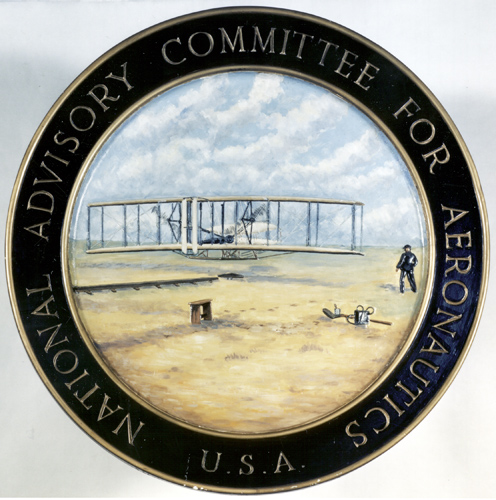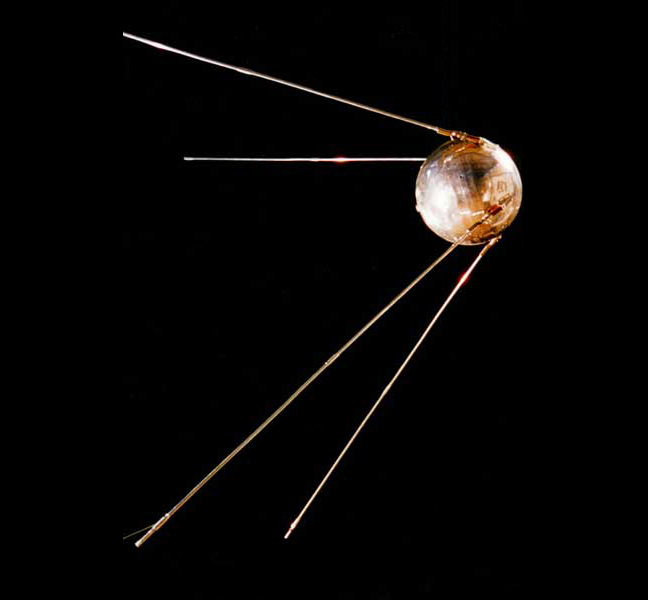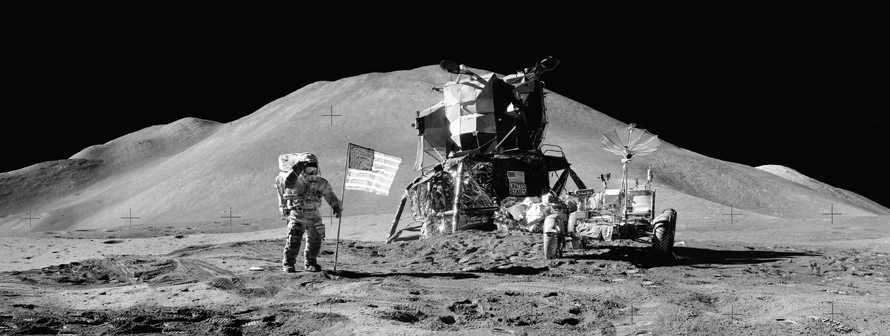History of NASA
NASA stands for National Aeronautics and Space Administration.

National Advisory Committee for Aeronautics
In 1915 Congress established the National Advisory Committee for Aeronautics (NACA). At this time there was great government interest in technological change. Robert Goddard had began his experiments with rocketry, Einstein had come up with his theory of relativity, Alexander Graham Bell made the first transatlantic telephone call and Henry Ford had developed the production line, the world was beginning to see the usefulness of technological advances.
The Wright Brothers had flown at Kitty Hawk but the advances in flight were being made in Europe. People were looking at this as a, "fad", a very dangerous one as accidents were many. The United States government started to realize that an organization was needed to research aviation. In 1915 the Navel Appropriation Bill was signed and attached to that bill was a line for $5000 annual to fund the NACA. Over the next forty-three years advances in flight would be used to help in World War I, II and develop the industry of aviation.
In 1958 the United States government (congress) decided to replace the NACA with the National Aeronautics and Space Administration, and it was in put charge of U.S. science and technology that has to do with airplanes or space.

Cold War & The Space Race
NASA was essentially formed in response to the "Space Race". The US and USSR were both worried about the other gaining a technological upper hand in rocket technology that would give them superior weapons. When the Soviet Union developed the first InterContinental Ballistic Missile (ICBM) the Cold War between the world powers was started. The theory was that whoever could get into space first would have a huge advantage over the enemy. In 1957, Russia launched Sputnik I, their first artificial orbital satellite, which required a response from the US. By the year 1961, the U.S. used the space race as a reason for going to the moon and as a way to increase their national prestige in the eyes of the world.

Today there are treaties limiting the control and use of space. The Outer Space Treaty, (Treaty on Principles Governing the Activities of States in the Exploration and Use of Outer Space, including the Moon and Other Celestial Bodies), is the basis of international space law. The treaty was opened for signature in January 27, 1967, and entered into force on October 10, 1967. In October 2011, one hundred and twenty-six (126) countries have agreed to the treaty, some have not signed it yet.
Since 2006 NASA's mission statement has changed to "pioneer the future in space exploration, scientific discovery and aeronautics research."
End of an Era
NASA has a long and rich history. Over the last fifty (50) years has collected scientific data from many different areas of space exploration. Each program has provided NASA and the world with many firsts. (For further information on NASA's various programs see this sites Space Vehicles). The end of the Space Shuttle program brings NASA to a new first, the first time the US doesn't have the capability of putting a man in space in over thirty (30) years. With the end of the Space Shuttle program on September 14, 2011, effectively ended NASA's manned space flight program. Getting to the International Space Station would require a ride with the Russians. People are wondering, what else is there for NASA to do?
NASA's Future
NASA is currently without any manned spacecraft program, but they are working on a number of projects to regain this capability. They are working with Private Sector companies and helping them to develop space craft and launch systems that will get man back into low-Earth orbit. They are developing plans to possibly establish a base on the Moon which could be used as a staging post for deep space exploration. NASA is also putting together plans for manned missions to Mars. All of these plans require more research, and the astronauts aboard the International Space Station (ISS) are currently collecting essential data to enable more robust planning.

NASA's aeronautics division is currently working on technology to halve the fuel requirements of commercial airplanes and develop state of the art air traffic control systems that allow for quicker and easier route changes.
NASA's science divisions are performing experiments and research to better understand Earth and our Solar System. They are studying ozone depletion and weather patterns to improve our ability to predict cyclones and other potentially destructive climate activity. They are also developing medicines that can only be researched in a zero-gravity atmosphere.
It is our aim to share the understanding that we have gained on NASA with you on this website in an interesting manner. We only hope to give you a flavor of NASA as it would be almost impossible to keep up to date with everything that they do.
Further, more in-depth, information can be found on a number of great websites. We would suggest that once you have reviewed our summary, you visit these websites for more detailed information:
nasa.gov wikipedia.org Orders of Magnitude, Roger E. Bilstein A History of the NACA and NASA, 1915-1990
All of the Earth's continents are wider at the north than in the south - and nobody knows why.